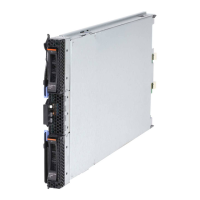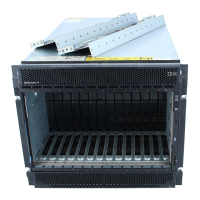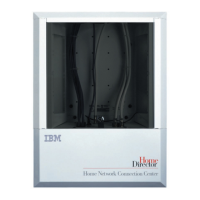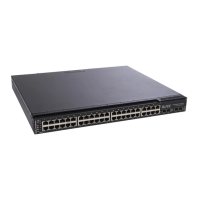Troubleshooting STP
This section describes how to troubleshoot the STP.
Spanning Tree Protocol Failure
A failure in the STA generally leads to a bridging loop. A bridging loop in an STP
environment comes from a port that should be in the blocking state, but is
forwarding packets.
A
Root
B C
Blocked
Port 1Port 1
Port 1Port 1
Port 1Port 1
Port 2Port 2
Port 2Port 2
Port 2Port 2
BPDUs
Designated
In this example, B has been elected as the designated bridge and port 2 on bridge
C is in the blocking state. The election of B as the designated bridge is determined
by the exchange of BPDUs between bridges B and C. Bridge B had a better BPDU
than bridge C. Bridge B continues sending BPDUs that advertise its superiority over
the other bridges on this LAN. If bridge C fails to receive these BPDUs for longer
than the Max. Age (default of 20 seconds), it could start to change its port 2 from
the blocking state to the forwarding state.
Note: To remain in the blocking state, a port must continue to receive BPDUs that
advertise superior paths.
There are several circumstances in which the STA can fail, mostly related to the
loss of a large number of BPDUs. These situations will cause a port in the blocking
state to change to the forwarding state.
Full/half duplex mismatch
A mismatch in the duplex state of two ports is a very common configuration error for
a point-to-point link. If one port is configured as a full duplex, and the other port is
left in auto-negotiation mode, the second port will end up in half-duplex because
Appendix D. Understanding and troubleshooting the Spanning Tree Protocol 133

